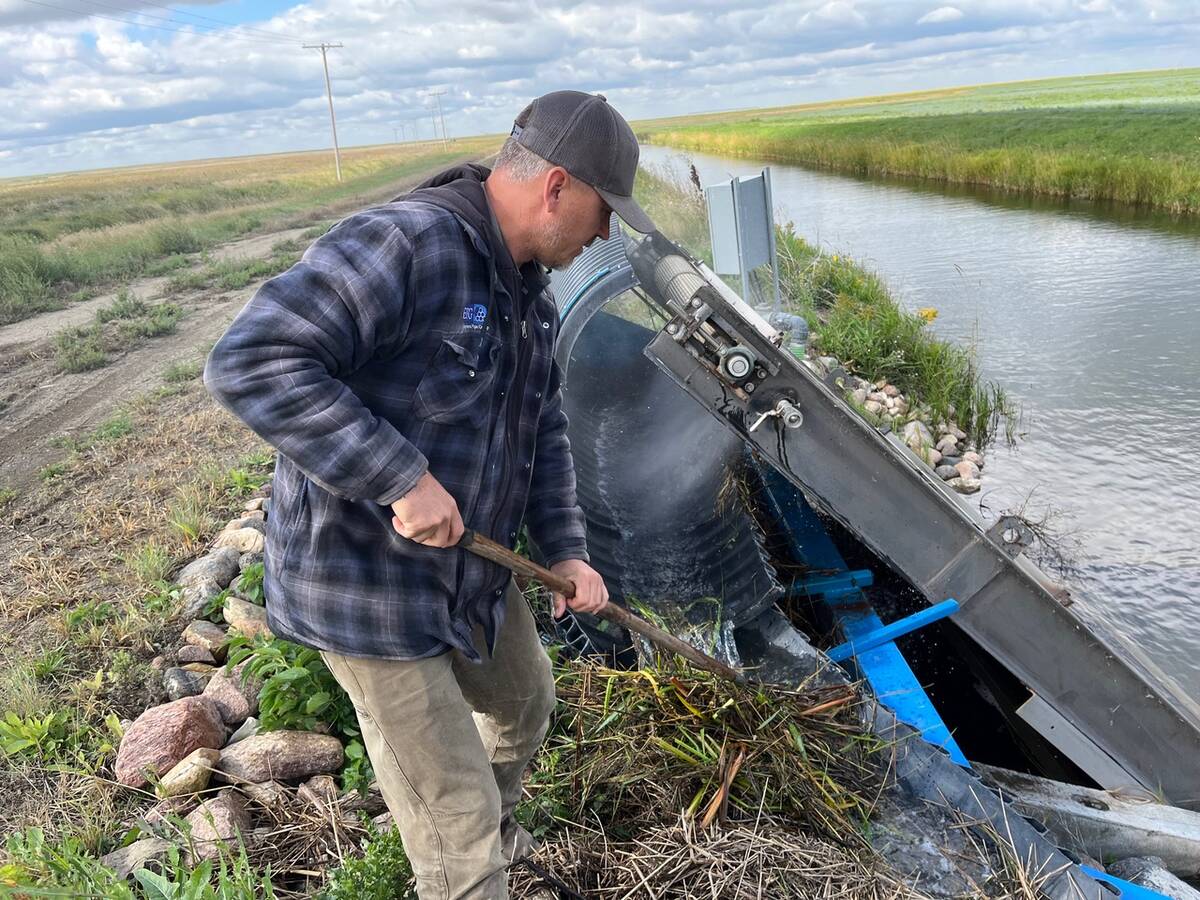Weeds and crops shift gears in dry weather. Weed spectrums can be
different in hot, dry years, with green foxtail, kochia and redroot
pigweed likely to be more abundant.
As well, herbicides should be chosen carefully because some withstand
dry weather better than others. General weed control guidelines for dry
periods:
- Remove weeds early to minimize the amount of moisture used by weed
populations. Where there is a leaf stage range for herbicide
Read Also

Saskatchewan farmer uses tile drainage to manage water
The integration of both irrigation and tile drainage results in higher yields, water efficiency, improved soils and less nutrient runoff, says one producer.
application timing, spray at the earlier end of the range whenever
possible.
- Herbicides are most effective under ideal growing conditions, when
crops and weeds are growing rapidly. Conditions that slow plant growth,
such as heat, moisture stress or both, can reduce crop tolerance and
weed control.
Review the Effects of Growing Conditions section for each product in
the Guide to Crop Protection. This section outlines the strengths and
weaknesses of products under different weather conditions. For example,
Group 1 products, such as Select, Poast and Assure, have performed
reasonably well in past droughts, but can still have performance
problems.
Growers who want to spray drought-stressed crops can consult with
manufacturers’ representatives on likely outcomes.
- Daytime temperatures of around 27 C can trigger crop injury in some
products. Contact-type herbicides such as Buctril M on flax and
Basagran on beans are most likely to be affected.
- Use full rates of herbicide. Reduced rates may work under ideal
conditions, but will fail if weeds are drought stressed.
- Use split applications of broadleaf and wild oat herbicides rather
than tank mixing if the Guide to Crop Protection warns that antagonism
can occur.
Cool weather generally means that green foxtail does not compete well
with cereals. Many producers on the eastern Prairies have taken
advantage of this in recent years and have opted to skip spraying
foxtail and let the crop suppress the weed.
This may not be the best strategy in fields that had to be resown in
early June, such as failed winter wheat. June temperatures are
generally warmer than in May, which means green foxtail will have a
competitive advantage over cereals at an early stage in crop
development. Thin, drought-stressed crops will also compete less with
green foxtail.
Foxtail plants that emerge at or about the same time as crops will
receive sunlight through thin crop canopies.
If a crop is used for greenfeed, farmers should be aware that many
herbicides used this spring may have grazing restrictions.
With most herbicides, a certain period of time must pass after
application before greenfeed from a treated field should be fed to
livestock. The time varies from product to product. To determine what
restrictions apply, refer to the Restrictions: Grazing section for
products listed in the Guide to Crop Protection.
Growers can be less concerned about field cleanliness when they are
used for greenfeed. It will not pay to spray as long as weed
populations are low to moderate. Cattle will eat weedy plants with no
problem as long as poisonous weeds are not a concern.
















